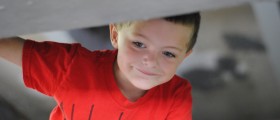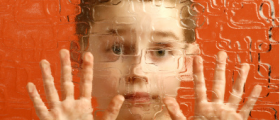
Fatherhood has changed greatly over thelast couple of centuries. Moreover, the modern fathers of todaydiffer their grandfathers or the male members of the family that camebefore them significantly. The position of the father in the familyhas been modified and many actions which were not related tofatherhood have now become essential parts of it.
Therefore, we live in a world of newage fathers, individuals who set the path towards a new way ofparenting children and fulfilling the roles of a male family member.
New Age Fathers
Prior to the 20th century,fathers were considered to be the main part of the family structure.Basically, without them, the family, as a term was not possible. Theywere the primary parents, getting the custody over the childrenshould a divorce or any other form of separation take place. Also,their attitude and desire shaped the educational and matrimonial fateof their children.
However, after some events whichchanged the world, the situation was never the same again. In the19th century, societies such as the West European and theUS ones, saw the female characters as uncorrupted and innocent familymembers, being saved from the cruel and malevolent business era.Being such, there were rendered most suitable for taking care ofchildren and performing the basic tasks at home.
Thus, men of the 19thcentury were not involved in the lives of their children excessively.Religion and many other humanitarian organizations foresaw theterrible outcome of the absence of the father figure in the lives ofchildren and promoted a reunion of the family as a whole, motivatingfathers to become more involved.
Today, this revolution in parenting hasallowed women to finally get their own jobs and pursue their owncareers, even though, in many societies, this is still not possible.Undeniably, more and more women are working and contributing to thefamily budget. In fact, many families consist of a stay-at-home dadand a working mother. Statistically, in the 1970s, only 4% of all topearners were women. By 2004, however, this number skyrocketed to 22%.So, nowadays, in families lead by single mothers or both parents,women are either earning equal amounts of money as their spouses ormore.
Yet, one might ask how this affectedthe fatherhood. Well, the revolution of the fatherhood took place inthe 20th century, resulting in the characteristics thatmost modern dads have. Namely, most male parents have a primary goalof being there for their children, spouses and other people theylove. Thus, modern men desire to enjoy providing for both theemotional and the material needs of their families.
Men of today are more involved in thelives of their family, choosing to step outside the box that theirfathers and grandfathers created. In fact, according to a researchstudy carried out by CarreerBuilder in 2007, about 37% of fathers would be readyto give up their careers instantly, for the sake of their family, iftheir wives earned more than they did. Additionally, 38% of thesubjects admitted that they would accept a decrease in salary inexchange for more time spent with their children.
In the US of today, we have about165,000 stay-at-home dads, even though these are commonly describedas lazy, unsuitable for parenting and unmanly.
Nevertheless, the fathers of today arecapable of being both the father and the mother figure for theirchildren, which is a great change when compared to the cold andauthoritarian past of the father figure. Modern fathers alter thetone of their voice to a softer one while speaking to their babies,change diapers and participate in most of the important events oftheir children's lives. Today's dad takes his kids to swimming andmany other activities, does homework with them, attends tea partiesof his daughter and sits in the front seat during his son's footballmatches. So, all the masculine characteristics of the past have beenchanged, for the sake of the family.
Fathers are Important for ChildDevelopment
In the fatherless part of the modernworld, about 61% of all child abuse cases are carried out bybiological mothers, in comparison to 25% of such misbehavior relatedto fathers. Nevertheless, about 79.6% of custodial mothers receive asupport award, while this only happens to 29.9 of custodial fathers.
Additionally, about 24.5% of all singlecustodial fathers work more than 44 hours a week. On the other hand,as far as single mothers are concerned, such occurrence is onlypresent in 7% of cases. Still, about 50% of all mothers see nopurpose in having a father figure present in their children's lives.
However, 63% of all youth suicideshappen in fatherless families and 85% of all children who displaycertain behavioral disorders, all come from fatherless homes.Moreover, 80% of rapists, 71% of school dropouts and 85% of juvenilejail prisoners all grew up in fatherless homes.
So, people who grow up without theirfathers are 5 times more likely to kill themselves, 32% more prone torunning away from home, 20 times more susceptible to suffering frombehavioral disorders and 14 times more likely to rape someone thanpeople who grew up with both parents. Furthermore, fatherlesschildren and young adults are 9 times more likely to drop out ofschool, 10 times more likely to try drugs, 9 times more prone toending up in a state-operated institution. Finally, children withoutfathers are 20 times more likely to end up incarcerated.
Therefore, fathers are more thannecessary in every family and the fatherhood revolution needs to besupported as much as possible.
















Your thoughts on this
Loading...